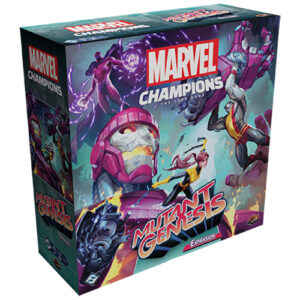
Rule Question
The rule in question involves how damage and horror from enemy attacks are assigned in gameplay, particularly in reference to the Moxie card. The AI summary suggested that these effects are dealt directly to the investigator without the possibility of assigning them to allies.
Rulesplainer
The consensus from the thread participants is that the AI’s interpretation is incorrect. Players believe that the damage and horror can typically be assigned to allies, armor, or other cards based on the conditions of the game. Many users advised against relying on AI resources for game rules and instead urged players to consult original rule sources or forums like BoardGameGeek for accurate information. The discussion highlighted concerns over the reliability of AI in providing game rules and stressed the importance of independently verifying any claimed rules against trusted resources. Ultimately, learning to interpret and understand the game’s rulebook is seen as more beneficial than outsourcing information to AI tools that might provide misleading answers.
AI overview; direct damage
Rule Question
Can Carson’s teammate spend 2 or more actions as their “gifted” action when using Carson Sinclair’s ability, which allows them to take an action as if it were their turn?
Rulesplainer
According to the rules, Carson grants an investigator an action that they can spend immediately as if it were their turn. It has been clarified that while Carson will effectively allow the player to utilize multi-action costs, they must pay any additional action costs themselves. The consensus indicates that Carson’s ability allows players to take advantage of their standard actions after utilizing the gifted action. Thus, if the investigator has unspent actions available in the round, they can indeed utilize them for any additional costs associated with the action taken through Carson’s ability. However, the disagreement arises when determining if “taking an action” could be construed as only granting the ability to spend the given action or if it allows for further actions to be spent on the same effect, which still requires clarity from the rules team. Overall, it seems that if you have actions available, you can use them in conjunction with the gifted action. The suggestion to consult the official rules team was made for further validation of this interpretation.
Can Carson’s teammate spend 2+ actions as their “gifted” action?
Rule Question
When an investigator uses card actions to gain a clue but there are no clue tokens available at the location, do they still receive a clue token?
Rulesplainer
No, if there are no clue tokens available on the location card, the investigator cannot gain a clue token. Any effect that attempts to discover or gain a clue fails if there aren’t any tokens present. This includes card abilities like “Working a Hunch” or others that require a clue to be available at the location. There is clarification that “discover” means moving an existing clue to the investigator, while “gain” refers to taking clues from the supply, which can lead to confusion if the wording is not noted. The game emphasizes the need to read cards carefully, as certain mechanics may enforce adding clues even when resources seem limited, preventing conditions where players can get stuck. Careful reading and understanding of specific game cards and rules is necessary to avoid missing critical information.
Gaining Clues
Rule Question
What happens to the Victory Points in the Obsidian Canyon scenario of The Drowned City when advancing the act?
Rulesplainer
In the Obsidian Canyon scenario, the rules state that when advancing the act, all open sky and Summit locations are shuffled back into the Summit deck, including those with the Victory X keyword and no clues. This means that players cannot keep these Victory Point locations for later use in the victory display unless they utilize the Eastern or Western Winds card to do so. Players expressed that this feels like an oversight since it negates the effort put into clearing victory locations during the game. Most participants in the discussion believe that the intention was likely to include a reminder about handling Victory Points in similar situations, similar to previous scenarios. Ultimately, the official rules clarification confirmed that players should expect all victory locations to be shuffled back into the deck. This makes it important for players to strategize around using the Eastern/Western Winds for securing Victory Points.
The Drowned City – Obsidian Canyon Victory Points
Rule Question
When using a Knife card, what abilities can I use when fighting a Monster, and do these differ based on whether the Knife card is in play or just in my hand?
Rulesplainer
When you have a Knife card in play, you can choose between two abilities during a fight, but you can only use one ability per action. You cannot combine or stack actions, even if they are of the same type, meaning you must decide between a straight-up Fight for a slight bonus or throwing the Knife for a better chance to hit. If the Knife is in your hand and you commit it for its +1 Combat bonus, you do not gain access to its abilities; instead, you only gain the combat icon’s bonus. Committing an Asset like the Knife means ignoring its text. If you had the actions available, you could perform both abilities in separate turns, but not simultaneously.
Knife card
Rule Question
If I use the second ability of the Knife card and discard it, does my action do 1 damage without testing, or does it add 1 additional damage if I succeed in the fight test?
Rulesplainer
Using the second ability of the Knife card does not bypass the need for a test. You will still take the test, and if you’re successful, you will deal 1 damage plus an additional 1 damage because of the Knife’s effect. This means the total damage dealt would be 2 if the fight test is passed. The phrasing “+1 damage” indicates that it adds to any base damage dealt upon a successful attack, rather than replacing it. The game uses modifiers like “+X” to allow for cumulative effects from different sources that may increase or decrease damage output. Hence, you must perform the test first to determine the outcome of your attack.
Knife card
Rule Question
Why does the Knife card say “+1 damage” instead of simply stating a total amount of damage for the attack?
Rulesplainer
The use of “+1 damage” is intentional for flexibility, as other cards may modify the base damage either upwards or downwards. Thus, rather than specifying a fixed damage amount, using “+X” allows for the cumulative nature of damage adjustments. This means if you apply multiple effects, they can stack effectively. In contrast, if a card simply stated a total damage amount, it wouldn’t account for potential modifications from other cards. Therefore, the current wording maintains clarity regarding how damage is calculated alongside other modifiers, making the rules more streamlined for players to understand.
Knife card






